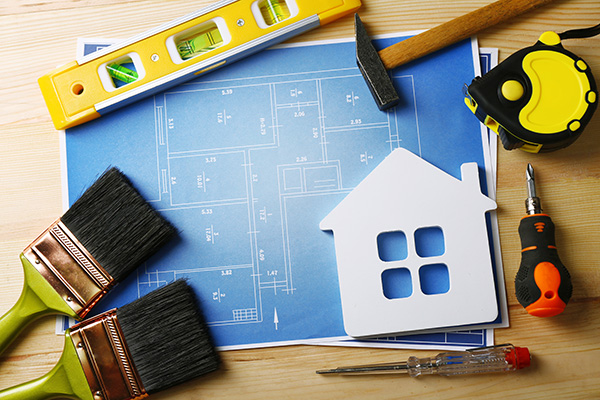Master These DIY Home Repairs
Among the many responsibilities of owning a home is basic upkeep and maintenance. When caught and taken care of in the early stages, many home repairs are fairly easy fixes. You’ll save yourself plenty of time, money and hassle if you learn to take care of them yourself. Of course, if a problem seems too big to handle on your own, it’s always best to be on the safe side and call a professional. But for those little day-to-day to glitches, a few tools and some basic knowledge (plus a quick Google search) are probably all you will need. Here are several basic DIY home repairs and upgrades it makes sense to master: 
Those Darn Doors — Whether they’re squeaking, sticking or slamming, chances are there’s at least one door in your home doing one of those things even as you read this. Fortunately, door issues are some of the fastest and easiest to fix on your own. If the door is:
- Squeaking — Squeaky door hinges are a noisy nuisance. To quiet them down, spray WD-40 or rub petroleum jelly into the squeaky joint, opening and closing the door as you do so to work the lubricant in. If that doesn’t do the trick, lift the hinge pins halfway and spray some more WD-40, then slide the pins back in place.
- Sticking — Wooden doors are affected by changes in temperature and humidity. They contract in cold, dry winter weather and expand when the heat and humidity rise. Generally, a stick door will eventually resolve itself when the weather changes. If, however, you have a stubborn door sticking year ‘round, it may be just slightly too large for the jamb. In that case, it will need to be shaved down slightly to fit. Unless you have some basic carpentry skills, that job is best left to a pro.
- Slamming — A slamming door can really put a damper on a relaxing evening or a lazy morning sleeping in. To lessen the impact, use peel-and-stick weather stripping on the door stop to absorb the impact.
Water, Water, Everywhere — Did you know the average household wastes approximately 10,000 gallons of water a year due to drips and leaks? And 10% of homes have leaks that waste more than 90 gallons per day? Letting those leaks go is not only wasteful, it increases your water bill. Plus, many major household problems, such as mold growth, start as the result of water going where it doesn’t belong. Here’s how to address some of the most common causes of water leaks:
- Faucets — The most common cause of a leaky faucet is a worn-out seat washer. It’s an easy and inexpensive fix just about anyone can master with a little patience. It does vary a bit depending on the type, age and brand of your faucet, so it’s best to search for your faucet’s model number online to find specific instructions.
- Toilets — A constantly running toilet can keep you up at night from the sound alone (not to mention calculating how much higher your water will bill be). The cause is most likely a worn or displaced flapper, float or chain — or some combination of those three — there are countless YouTube videos that run down the fixes step-by-step. Usually, they’ll only require a few bucks for parts and less than a half-hour of labor.
- Hose Bib — If you notice your water bill is higher than usual and you’ve checked all the usual suspects inside for leaks, there’s a good chance you have a leaky hose bib outside. It’s usually just a washer that needs replacing, which requires just a few steps and a screwdriver (there are plenty of YouTube videos for this fix, too).
One important thing to note about all these water-related repairs is that you’ll need to know where and how to turn off the water supply to each of these areas before you begin your work.
Pro Paint Prep — Painting is exciting because it can change the look and feel of any room for a relatively small investment. It’s so tempting to just grab the roller, crack open the can and go town. But, if you do, you’re not going to get the results you want. Paint will look better and last longer if you properly prep the surfaces first.
- Clean — It’s not always visible, but walls collect dirt, dust and grime just like any other surfaces in your home. At a minimum, wipe them down with a soft, dry cloth. If you’re feeling really ambitious, (or the walls are visibly dirty), wash them with a solution of laundry detergent and water — about three teaspoons of detergent to one gallon of water. Make sure they dry completely before applying primer.
- Prime — Using primer before painting helps to hide minor imperfections in wall texture, helps paint glide on smoothly and helps ensure you get the true color you’re hoping for. Talk to a paint expert at the home store about which primer works best for the paint you choose.
- Odds & Ends — If possible, remove all furniture from the room to give you open space to work and avoid splashing or spilling paint on it. If you can’t move furniture out, cover it with drop cloths. Remove switch plates and cover any sconces, fixtures or decorate trim with painter’s tape.
Learning to do some basic home repairs and upgrades isn’t just a matter of practicality — although saving money and time is great. It’s also a way to deepen the pride you take in your home and fully participate in the experience of being a homeowner.
